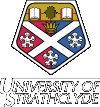Upgrading Strategies For Hospitals
(Golden Jubilee Hospital)
 |
 |
|
|
|
|
Contents |
BOSCAARBackgroundThe NHS have set targets for their hospitals to reduce their energy usage and carbon emmisions as part of targets set by the government. These targets mean that all NHS hospitals should be aiming to reduce their carbon emmisions via a selection of methods. This project will investigate two potential options that can be employeed to reduce the energy consumed within hospitals. These options will be investigated using a case study and modelling techniques to demonstrate their effectiveness. The Golden Jubilee Hospital was selected as a case study for a variety of reasons. The most significant of which is that the hospital has both deep plan sections as well as shallow plan sections to the building. This allows the hospital to be an ideal case study due to the fact that both of these building types can be investigated using a single case study. This is important as previous investigation has shown that this is a key factor in determining how much energy a hospital consumes. The Golden Jubilee Hospital was originally a private hospital built for an American company, as a result of this it has some very American features. The most notable of which is a large amount of air conditioning which negatively affects its performance in the National Review each year. It is of interest to note that The Beardmore Hotel which is part of the complex has plans to install a CHP system. For this reason it is of interest to investigate the CHP systems potential within the main building of the hospital Objective
Scope
Constraints
Approach
Assumptions
Risks
|
Renewable Energy Systems & The EnvironmentGroup ProjectIt is the hope of the Energy Systems and Environment project team that the information contained in this website will contribute to the relevant field. Please feel free to use any of the findings presented to further your own study, making due acknowledgement where appropriate. |
|